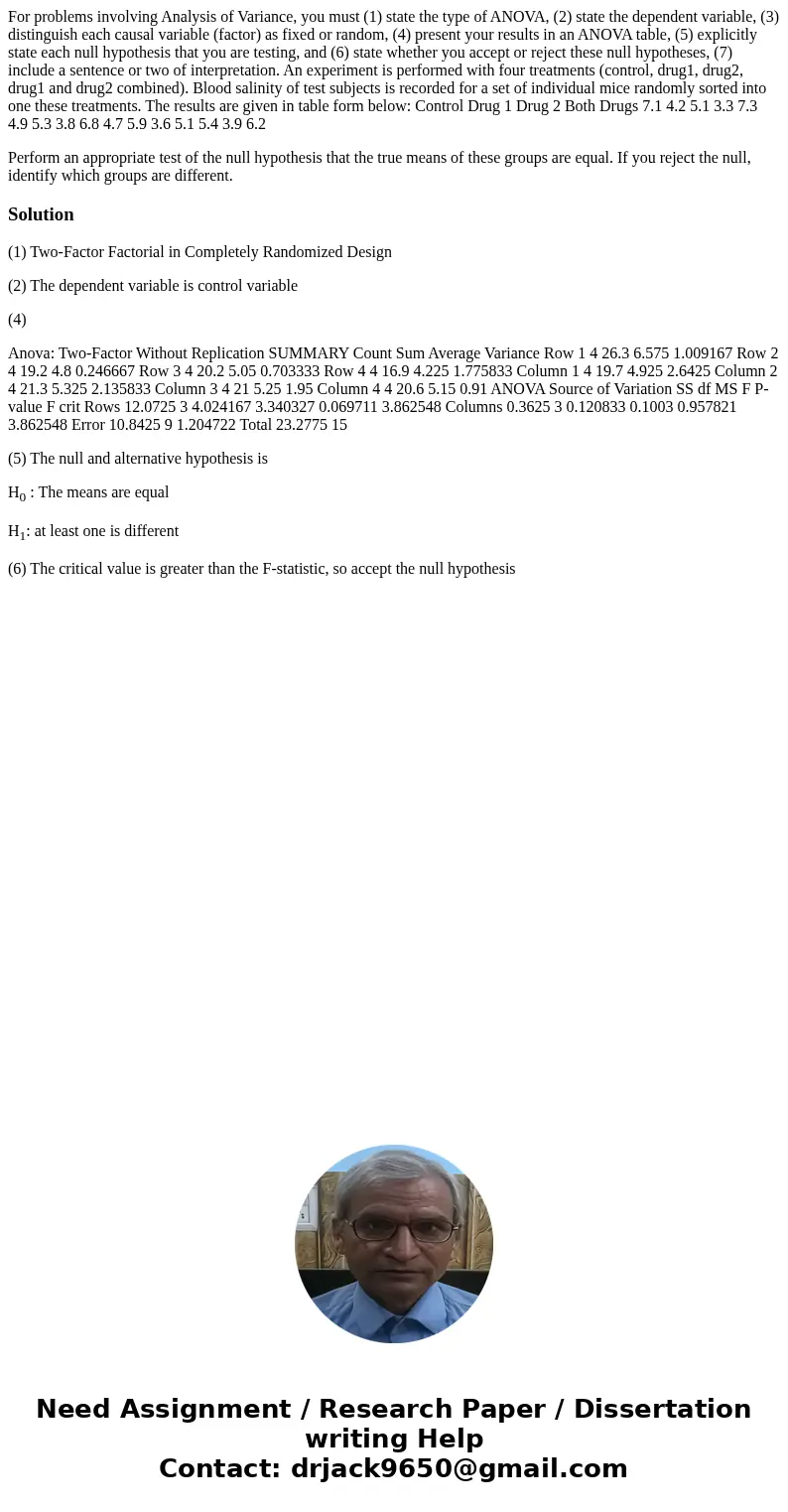For problems involving Analysis of Variance you must 1 state
For problems involving Analysis of Variance, you must (1) state the type of ANOVA, (2) state the dependent variable, (3) distinguish each causal variable (factor) as fixed or random, (4) present your results in an ANOVA table, (5) explicitly state each null hypothesis that you are testing, and (6) state whether you accept or reject these null hypotheses, (7) include a sentence or two of interpretation. An experiment is performed with four treatments (control, drug1, drug2, drug1 and drug2 combined). Blood salinity of test subjects is recorded for a set of individual mice randomly sorted into one these treatments. The results are given in table form below: Control Drug 1 Drug 2 Both Drugs 7.1 4.2 5.1 3.3 7.3 4.9 5.3 3.8 6.8 4.7 5.9 3.6 5.1 5.4 3.9 6.2
Perform an appropriate test of the null hypothesis that the true means of these groups are equal. If you reject the null, identify which groups are different.
Solution
(1) Two-Factor Factorial in Completely Randomized Design
(2) The dependent variable is control variable
(4)
Anova: Two-Factor Without Replication SUMMARY Count Sum Average Variance Row 1 4 26.3 6.575 1.009167 Row 2 4 19.2 4.8 0.246667 Row 3 4 20.2 5.05 0.703333 Row 4 4 16.9 4.225 1.775833 Column 1 4 19.7 4.925 2.6425 Column 2 4 21.3 5.325 2.135833 Column 3 4 21 5.25 1.95 Column 4 4 20.6 5.15 0.91 ANOVA Source of Variation SS df MS F P-value F crit Rows 12.0725 3 4.024167 3.340327 0.069711 3.862548 Columns 0.3625 3 0.120833 0.1003 0.957821 3.862548 Error 10.8425 9 1.204722 Total 23.2775 15
(5) The null and alternative hypothesis is
H0 : The means are equal
H1: at least one is different
(6) The critical value is greater than the F-statistic, so accept the null hypothesis

 Homework Sourse
Homework Sourse